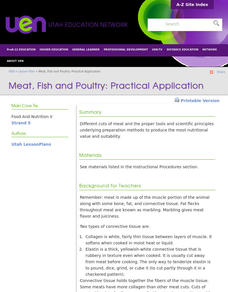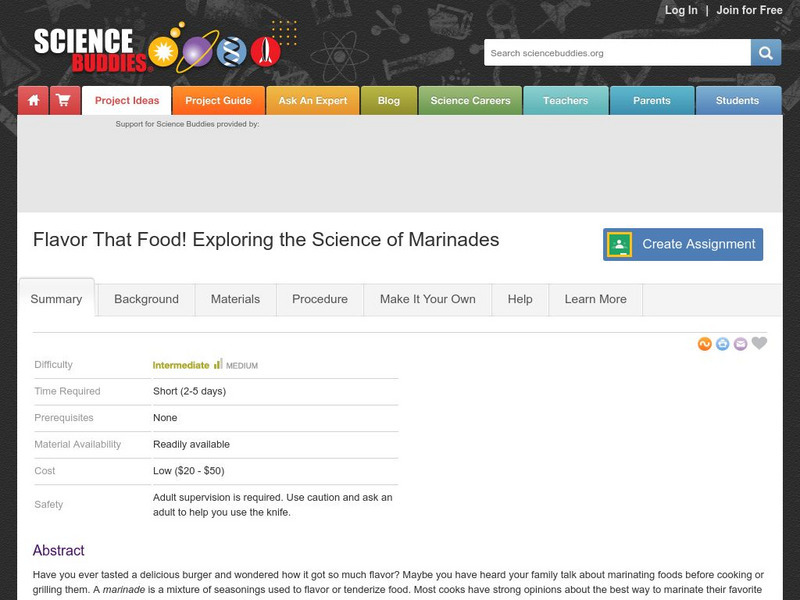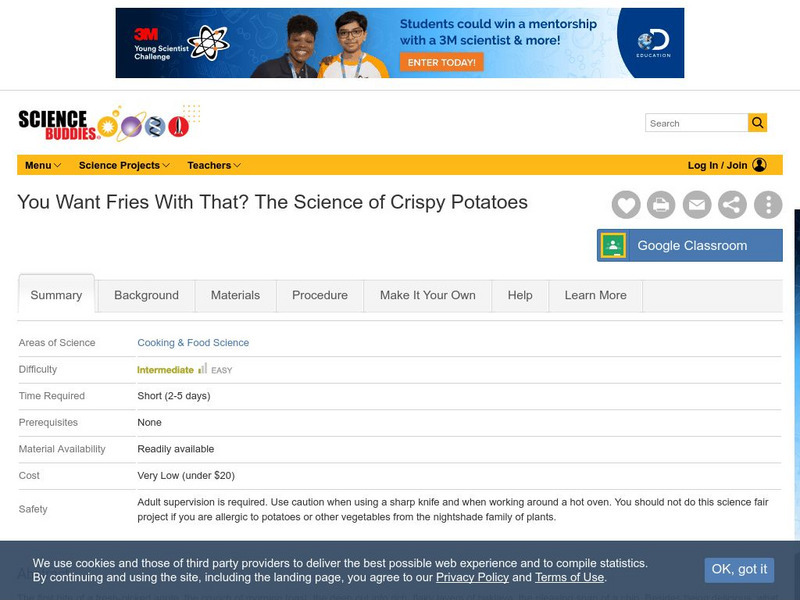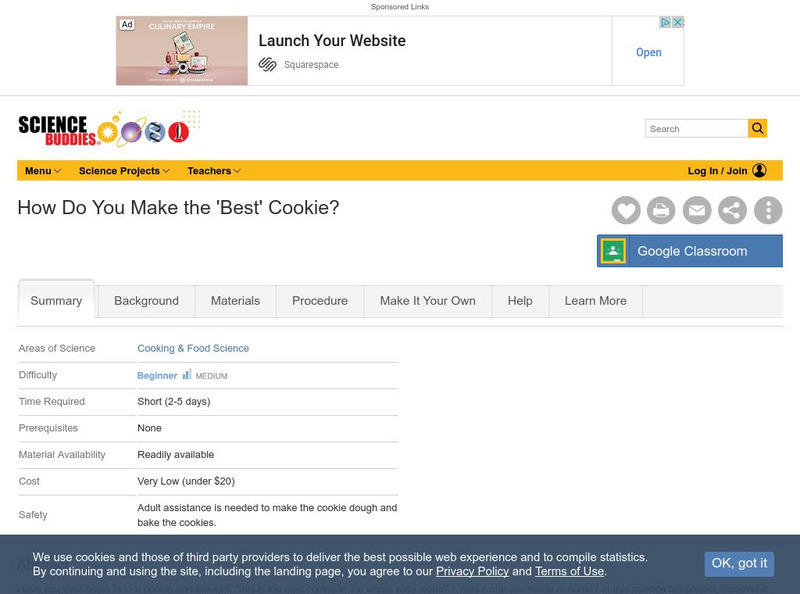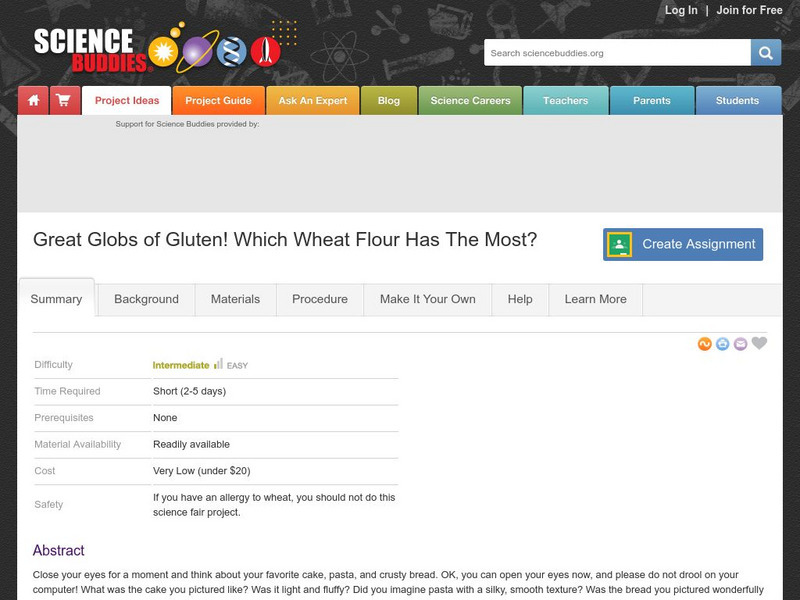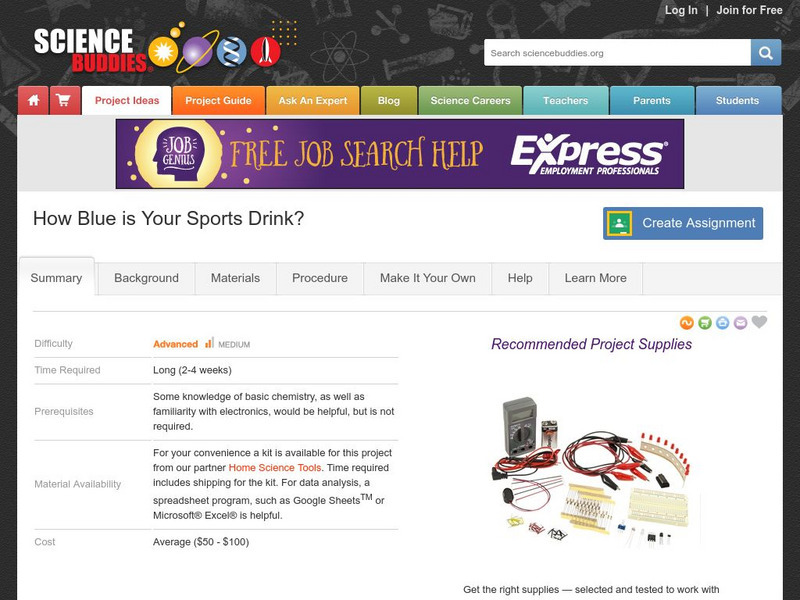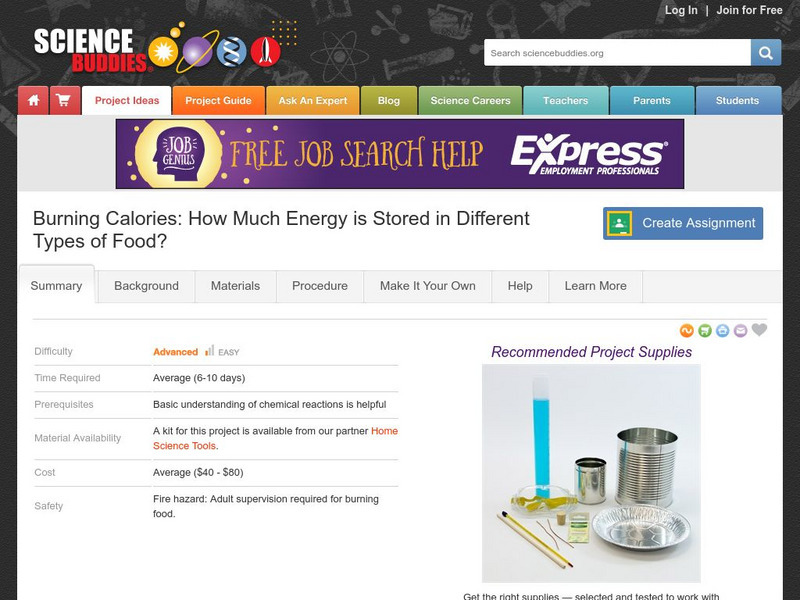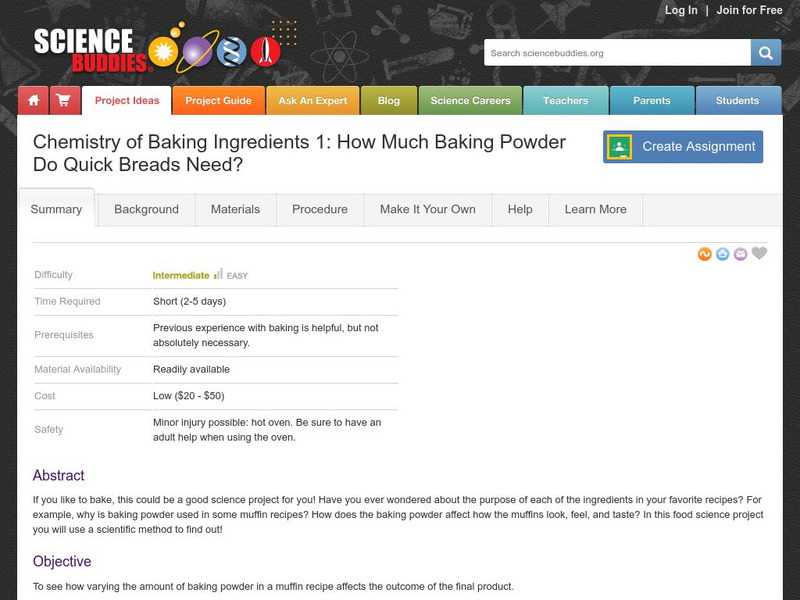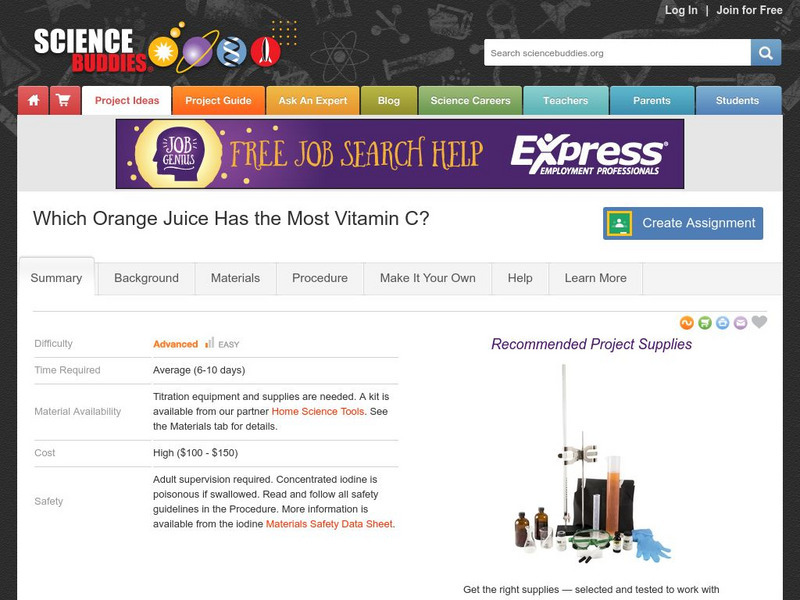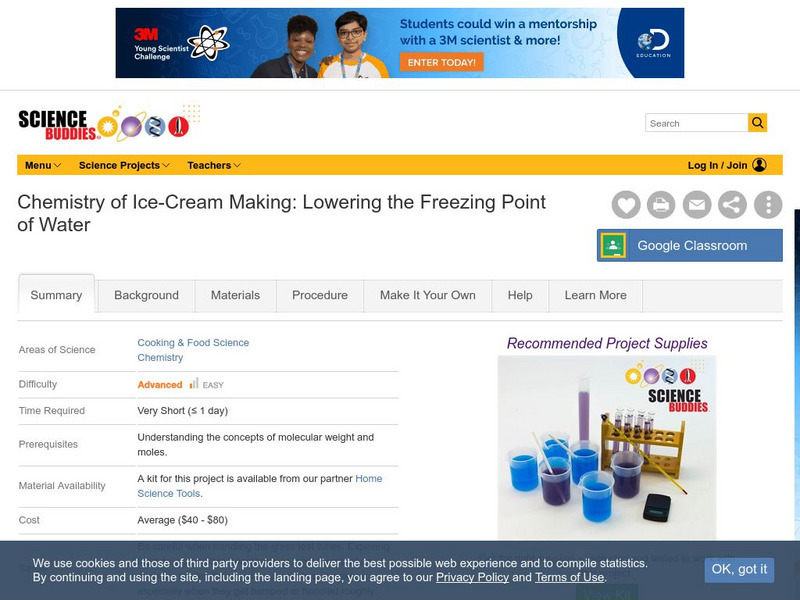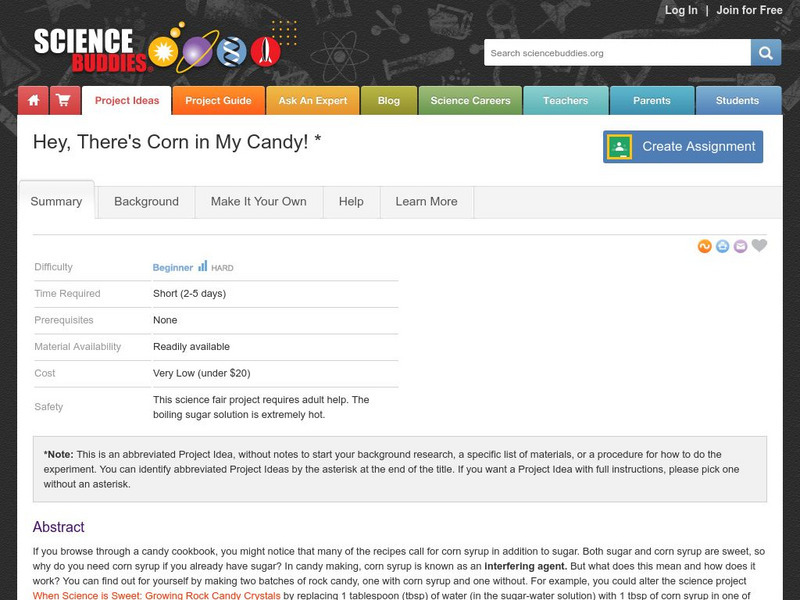Curated OER
Slow Food: A Different Path
Students investigate the slow food movement through a reading and activity. In this slow food lesson, students read about the differences in fast food and slow food and the ties to sustainable agriculture. They nominate a local specialty...
Curated OER
Meat, Fish and Poultry: Practical Application
A note-taking outline is given to learners which covers meat composition and quality, types of meat and storage, and cooking meat. By viewing pictures they learn to identify cuts of meat or poultry products. They discuss inspection and...
Curated OER
4-H Horticulture/Garden Activity Page
As part of an exploration of plants, learners engage in projects to design greenhouses, grow vegetables, and other endeavors. This 20 question activity packet could be used as a classroom mini-lesson or as the start to a long-term project.
Curated OER
4-H Horticulture/Garden Activity Page- Beginning
In this 4-H garden project worksheet set, student study the parts of seeds and plants. They make a mini-greenhouse. They complete a career scavenger hunt, tools word search, and experiment to learn more about the effect of water on seed...
Science Buddies
Science Buddies: Flavor That Food! Exploring the Science of Marinades
Have you ever tasted a delicious burger and wondered how it got so much flavor? Maybe you've heard your family talk about marinating foods before cooking or grilling them. A marinade is a mixture of seasonings used to flavor or tenderize...
Science Buddies
Science Buddies: Egg Cellently Cooked Eggs: The Process of Soft Boiling an Egg
Sometimes on a busy day, it's hard to get things done. The rush to get things done can start first thing in the morning, when you're so busy getting ready and gathering your homework, that you barely have time for breakfast. It takes...
Science Buddies
Science Buddies: How Can Tofu Pack Such a Flavorful Punch?
Spicy fried tofu. It's a delicious and savory main dish at many Asian restaurants. Stab a golden-brown piece, bite into it, and the juice inside rushes out, filling your mouth with rich flavors. Continue eating and you find the texture...
Science Buddies
Science Buddies: The Science of Making Cheese!
Oooey gooey cheese - yum. Who doesn't like a slice of warm pizza straight from the oven? There's nothing quite like a slice of pizza and a glass of milk, so what makes pizza so great? The cheese. But did you know that making cheese is...
Science Buddies
Science Buddies: How Greasy Are Your Potato Chips?
One of America's favorite snacks is potato chips. Although potato chips are very tasty, some varieties are not very healthy for you. A typical 1-ounce (oz.) serving of a well-known national potato chip brand contains 150 calories, 90 of...
Science Buddies
Science Buddies: You Want Fries With That? The Science of Crispy Potatoes
The first bite of a fresh-picked apple, the crunch of morning toast, the deep cut into rich, flaky layers of baklava, the pleasing snap of a chip. Besides being delicious, what do these foods have in common? They're crisp. They have a...
Science Buddies
Science Buddies: How Sweet It Is! Measuring Glucose in Your Food
You know that sugar makes food sweet. But did you know that there are different kinds of sugar? Sucrose is the granulated sugar that you usually use for baking. Another kind of sugar, which is found in honey and in many fruits, is...
Science Buddies
Science Buddies: How Do You Make the 'Best' Cookie?
The benefit to cooking food from scratch versus store bought food is that you determine the taste. In this science fair project, discover if you can perfect the taste of your favorite cookie right in your own kitchen by experimenting...
Science Buddies
Science Buddies: Great Globs of Gluten! Which Wheat Flour Has the Most?
Close your eyes for a moment and think about your favorite cake, pasta, and crusty bread. OK, you can open your eyes now, and please don't drool on your computer. What was the cake you pictured like? Was it light and fluffy? Did you...
Science Buddies
Science Buddies: Maple Syrup: For Pancakes, Waffles, and Crystal Candy?
Maple syrup is deliciously gooey and great on breakfast foods like pancakes and waffles. But it has another amazing property. It can form crystals under the right circumstances, and the crystals change in size and shape, depending on...
Science Buddies
Science Buddies: How Blue Is Your Sports Drink?
Do you read the list of ingredients in foods and drinks before you buy them at the grocery store? If you do, you may have noticed that many of the items that are blue in color have the same dye, called FD&C blue 1. In this chemistry...
Science Buddies
Science Buddies: How Much Energy Is Stored in Different Types of Food?
In this project you'll learn a method for measuring how much chemical energy is available in different types of food. You will build your own calorimeter to capture the energy released by burning a small food item, like a nut or a piece...
Science Buddies
Science Buddies: How Much Baking Powder Do Quick Breads Need?
If you like to bake, this could be a good project for you. There is a purpose for each of the ingredients in your recipes, but not everyone is always aware of what that purpose may be. Though this lab takes multiple days, you will...
Science Buddies
Science Buddies: Can Baking Soda Substitute for Baking Powder in a Recipe?
There's nothing quite like the smell of fresh-baked muffins for breakfast on a Saturday morning. If you're into baking, you might want to try this insightful project that lets you witness the chemistry behind making muffins. You'll get...
Science Buddies
Science Buddies: Determining Iodide Content of Salt
In this week long "kitchen chemistry" project you will use chemicals from the supermarket to test for the presence of iodine and iodide in salt. These are common micronutrients added to some preparations of table salt. A materials list,...
Science Buddies
Science Buddies: Which Orange Juice Has the Most Vitamin C?
In this project you'll learn how to measure the amount of vitamin C in a solution using an iodine titration method. You will hypothesize which juice will contain the most vitamin C, and then compare the amount of vitamin C in three...
Science Buddies
Science Buddies: How Does Packaging Affect the Ripening of Fruit?
Why do different types of fruits come packaged in different ways? In this project, you will experiment with different ways of packaging fruit to see if it has an effect on the freshness of the fruit. Will a different kind of packaging...
Science Buddies
Science Buddies: Lowering the Freezing Point of Water
When it comes to making ice cream, in order to make the mixture cold enough to freeze, you surround the container with ice and rock salt. This experiment helps you learn how the addition of salt (or other substances) affects the freezing...
Science Buddies
Science Buddies: Tough Beans: Which Cooking Liquids Slow Softening the Most?
Beans are important to the diets of many people, that is why you always find it cooked a specific way or in a specific dish in different cultures. Here you will learn how the liquid that beans are cooked in affects how quickly or slowly...
Science Buddies
Science Buddies: Hey, There's Corn in My Candy!
In candy making, corn syrup is known as an "interfering agent." You can find out just what this agent does by making two batches of lollipops, one with corn syrup and one without and examining the differences between the two. Once you...

